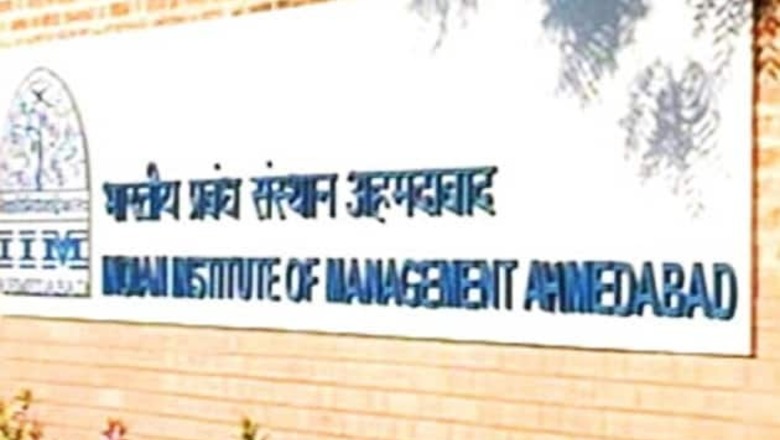
views
With the B-school application season kicking in, it is important for the students to decide on the number of B-schools that they would like to apply to, the exams they would like to write etc. We look at 2 important questions here:
1. What should we look for while deciding which B-schools to look for?
2. Which exams to write?
What should we look for while deciding which B-schools to look for?
Students need to look at the following criteria carefully and then decide on which B-Schools to apply to.
• Placement : A large number of management institutes boast of a 100% placement record for their students. With management institutes mushrooming all over the country these claims should not be taken at face value, and should be scrutinised more closely.
• Location of the B-School: B-schools located in larger cities, with a better industry interface would score over the small-city counterparts as they would tend to have better opportunities for internships, better quality part-time faculty members and also a little edge in final placements.
• Brand Name: You do your MBA only once and the brand name of the B-school you went to will stay with you for the rest of your career.
• Return on Investment: Look very closely at the fee you will need to pay. With the B-school expenses for the two years of MBA reaching as much as 15 lakhs, it is important for you to consider how much money you will need to pay and what kind of salary you will get.
Which Exams to Write?
The exams you write will clearly depend on the B-school you wish to join. However, often the dependence is not so clear. You can identify opportunities of a good B-school through the entrance exam as well. Read on.
The following things should be considered while looking for the B-schools to apply to:
- Expected performance in the entrance exams: Depending on your current level of preparedness, how much time and effort you are willing to put in and , you should get a realistic estimate of the score range you can expect in the main exam. While selecting the B-schools to apply to, you should select around 60% applications from the expected performance band (realistic case), around 20% from the band above your expected range (optimistic case) and the remaining from the lower band (pessimistic case).
- Your strength areas: At the end of the year you could be choosing from a range of 12 B-school entrances (Institutes offering admission to more than a B-school : CAT, XAT, SNAP, CMAT, MAT, ATMA, Institutes offering admission to a single B-school (may have multiple campuses) : IIFT, TISSNET, NMAT, MICAT, IBSAT).
Even though your CAT prep prepares your for all the exams, there are variations in the finer detail. And that could be an opportunity for you. For eg, XAT has a section on Decision Making, TISS NET has a relatively easier entrance test, IIFT has a liking for calculation intensive paper with a tough general awareness section, CMAT is a relatively easy exam offering B-schools in a very broad range. You only need to identify the exam where you are more likely to do better and make sure you apply to it.
- Availability of alternatives: The number of B-schools that you need to apply to definitely depends on how keen you are to pursue an MBA or alternately how urgent it is for you to get into a B-school. If we look at three different categories of students, this would become clear:
- Pursuing final year of graduation: The student may be very keen on getting into a management institute but he/she can afford to try again next year if he/she does not get into an institute of one's choice. So, he/she may apply rather selectively. Again it would also depend on your placement prospects, the nature and location of the organization you could be joining etc.
- Completed graduation and not involved in any full-time occupation: In this case, one would be advised to spread the applications to cover the best, average and the worst case scenario. You should definitely apply to a few extra institutes on the pessimistic side.
- Working professional: If you are employed, you should consider the level of placements you would want post MBA, discount for the fees (opportunity cost of money), how keen are you on changing your stream etc and apply only to institutes which conform to the minimum retrun on investment criteria.
- Reservation Status: Various B-schools offer reservation on the basis of Caste, Religion, Domicile, Family background etc. Please check if you are eligible for any of these and apply liberally to B-schools in the category.
- Sectoral Programmes: The number of applications to the sectoral programme B-schools are generally lower than the General MBA programmes.
- Budget: With the application (form) fee for each institute being in the range of Rs.500 to Rs.1600, you may not want to look at more than 10-12 institutes. It is always a good practice to select institutes across categories. At the same time, you also need to keep in mind that CAT, XAT, CMAT, SNAP, MAT and ATMA are comprehensive exams and you may need to apply to the institues seperately. So, the cost of application will need to keep that in account. The remaining exams viz IIFT, TISSNET, NMAT and MICAT are institute specific tests.
The article is authored by Mr. Prakash Rajput, Assistant Course Director, CAT, T.I.M.E. (Triumphant Institute of Management Education)
####With the B-school application season kicking in, we get you the expert advice here.


















Comments
0 comment